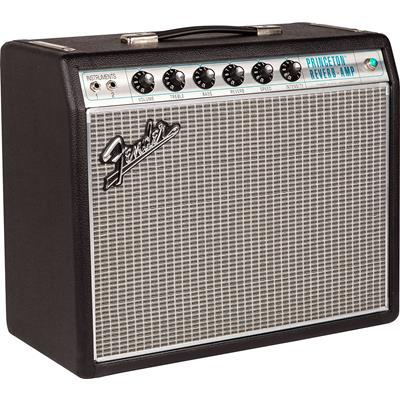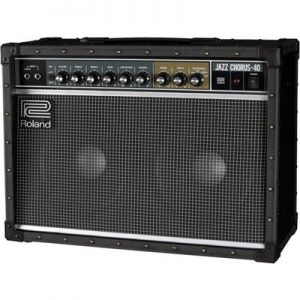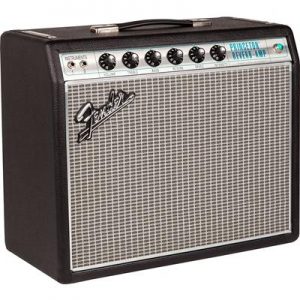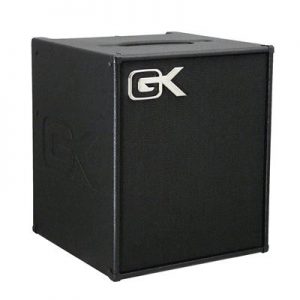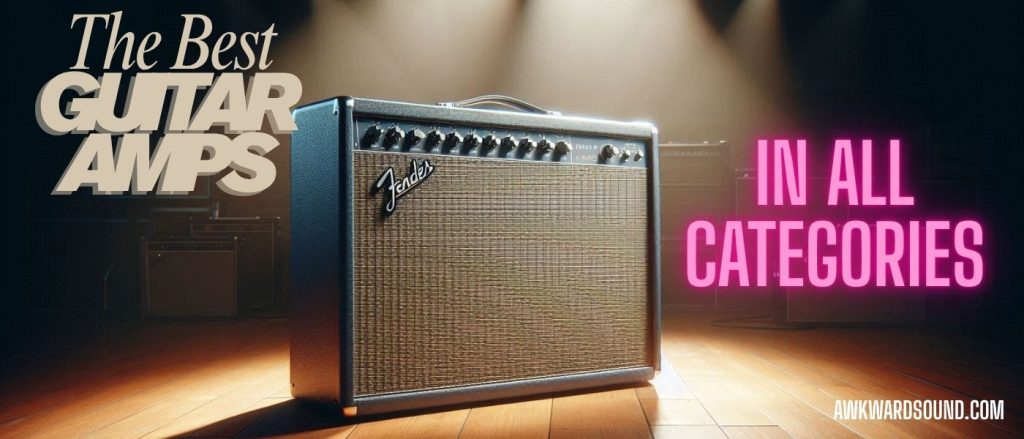
Finding the perfect guitar amplifier can transform your playing experience from ordinary to extraordinary. Whether you’re strumming your first chords or shredding on stage, the right amp is essential for bringing your electric guitar to life. This comprehensive guide breaks down the best guitar amps across all price ranges, styles, and purposes to help you make the perfect choice.
Why Your Guitar Amp Matters More Than You Think
Your amplifier isn’t just a volume booster—it’s the heart of your electric guitar’s sound. Without an amp, even the most expensive electric guitar produces barely audible acoustic tones. The amplifier shapes your guitar’s voice, adding warmth, distortion, reverb, and character that defines your musical style.
Many professional musicians agree: a great amp paired with an average guitar sounds better than an expensive guitar through a poor amplifier. This makes choosing the right amp one of the most important decisions in your musical journey.
Best Guitar Amps
Best Beginners & Budget Amps Under $100

Perfect for: First-time players, apartment practice, learning basics
Starting under $100 doesn’t mean sacrificing quality entirely. While these amps won’t match professional-grade equipment, the best budget options provide reliable practice companions that last through your learning journey.
What to Expect:
- Basic tone controls (volume, gain, treble, bass)
- 10-20 watts of power
- Single 6-8 inch speaker
- Headphone output for silent practice
- Simple, straightforward operation
Realistic Expectations: Budget amps excel at clean practice tones and basic overdrive. They’re perfect for learning chord progressions, practicing scales, and jamming quietly at home. Don’t expect them to handle high-volume band practice or gigging situations.
Top Recommendations:
- Fender Frontman 10G – Classic Fender cleans, reliable build
- Orange Crush 12 – Distinctive Orange character and overdrive
- Positive Grid Spark Mini – Surprising tone quality in ultra-portable package
Guitar Practice Amps Under $200
Perfect for: Serious beginners, bedroom players, small jam sessions
The $100-$200 range represents a significant quality jump. These amps offer noticeably better sound quality, more features, and enough power for small group practice sessions.
Key Improvements Over Budget Amps:
- Enhanced speaker quality (typically 8-12 inches)
- Multiple channels (clean and overdrive)
- Built-in effects (reverb, delay, chorus)
- Better build quality and longevity
- 20-40 watts of power
What Makes Them Special: This price range is where amps begin to specialize. You’ll find options tailored for specific styles, better tone-shaping controls, and features that support musical growth without overwhelming beginners.
Top Recommendations:
- Boss Katana 50 MkII – Versatile modeling with professional features
- Fender Champion 40 – Traditional Fender tone with modern convenience
- Blackstar ID:Core V4 – British-inspired tones with stereo speakers
Versatile Amps Under $300
Perfect for: Intermediate players, band practice, small venue gigs
Breaking the $200 barrier opens up significantly better amplifiers. These amps bridge the gap between practice and performance, offering professional features at accessible prices.
Notable Upgrades:
- Larger 12-inch speakers for fuller bass response
- Multiple channels with dedicated EQ controls
- Effects loops for pedal integration
- 30-60 watts suitable for band practice
- Better component quality for enhanced durability
Performance Capabilities: These amps handle band rehearsals confidently and work for small venue performances. The improved speaker size delivers the low-end punch missing from smaller practice amps.
Top Recommendations:
- Orange Tiny Terror – Classic Orange tones
- Line 6 Spider V 240 – Extensive modeling capabilities
- Peavey Vypyr VIP 3 – Multi-instrument modeling amp
Semi-Professional Amps Under $500
Perfect for: Gigging musicians, recording, serious hobbyists
Modern technology allows incredible value in this price range. These amps deliver professional-grade tone and features that would have cost thousands just a decade ago.
Professional Features:
- All-tube circuits or high-quality modeling
- Multiple channels with independent EQ
- Effects loops and line outputs
- Power scaling for home and stage use
- Robust construction for touring
Performance Level: These amplifiers handle everything from intimate acoustic sets to full-band rock performances. Many professional musicians use amps in this range as their primary gigging equipment.
Top Recommendations:
- Fender Blues Junior IV – Classic tube warmth and reverb
- Marshall DSL20CR – Iconic Marshall crunch in compact format
- Boss Katana 50w Gen 3 – Professional modeling with extensive connectivity
Professional Amps Under $1000
Perfect for: Professional musicians, recording artists, serious enthusiasts
This premium category represents the pinnacle of guitar amplification. These amps offer uncompromising quality, specialized features, and the tonal excellence demanded by discerning musicians.
Professional Standards:
- Hand-wired tube circuits or pristine modeling
- Multiple channels with complex switching
- Professional-grade speakers and transformers
- Extensive connectivity options
- Boutique-level build quality
Who Needs These: While intermediate players can appreciate these amps, they truly shine in the hands of experienced musicians who can utilize their full potential. Recording studios, touring professionals, and serious enthusiasts make up the primary market.
Top Recommendations:
- Mesa Boogie Mark Five: 25 – High-gain excellence with versatility
- Fender Hot Rod Deluxe IV – Industry-standard gigging workhorse
- Vox AC30C2 – British Invasion tone in modern package
Acoustic Guitar Amp
Perfect for: Singer-songwriters, acoustic performers, coffee shop gigs
Acoustic guitar amplifiers serve a specialized purpose: faithfully reproducing your acoustic guitar’s natural tone while adding useful features for live performance.
Key Differences from Electric Amps:
- Clean, transparent amplification – No distortion or coloration
- Multiple input channels – Guitar, microphone, and line inputs
- Tailored EQ controls – Designed for acoustic instrument frequencies
- Feedback suppression – Anti-feedback circuits and notch filters
- Portable design – Lightweight for easy transport
Essential Features to Consider:
- Multiple inputs with independent volume controls
- Built-in effects like reverb and chorus enhance acoustic tones
- DI output for connecting to PA systems
- Battery power option for street performances
- Microphone input for vocals
Common Mistake to Avoid: Don’t use acoustic amps to make your acoustic guitar sound electric. Their purpose is amplification, not alteration. For electric-style sounds, choose an electric guitar and appropriate amp.
Top Recommendations:
- Fishman Loudbox Mini Charge – Battery-powered with dual channels
- Marshall AS50D – Affordable dual-channel acoustic solution
- AER COMPACT 60/4 ACOUSTIC AMPLIFIER – Stereo effects and premium features
Desktop Guitar Amp
Perfect for: Apartment dwellers, late-night practice, space-conscious musicians
Desktop amps revolutionize home practice by combining portability, convenience, and surprisingly good tone in compact packages that fit anywhere.
Advantages of Desktop Design:
- Space-efficient – Fits on desks, shelves, or coffee tables
- Lightweight and portable – Easy to move and store
- Low-volume optimization – Great tone at neighbor-friendly levels
- Modern connectivity – USB, Bluetooth, and app integration
- Power efficiency – Many run on batteries or low power consumption
Modern Innovations:
- Wireless connectivity for smartphone integration
- USB audio interfaces for direct recording
- App-based controls with preset libraries
- Modeling technology cramming multiple amp types into tiny packages
- Battery operation for complete portability
Perfect Use Cases:
- Late-night practice without disturbing others
- Travel and hotel room practice
- Office break room jamming
- Bedroom recording setups
- Coffee table casual playing
Top Recommendations:
- Yamaha THR10II – Premium modeling with wireless capability
- Positive Grid Spark Mini – AI-powered practice with app integration
- Boss Katana Mini – Ultra-portable with authentic Boss tone
Solid State Guitar Amp
Perfect for: Players prioritizing reliability, consistency, and value
Solid-state amplifiers use transistor-based circuits instead of vacuum tubes, offering distinct advantages that make them ideal for many musicians.
Why Choose Solid State:
Reliability & Durability:
- No fragile tubes to replace or break
- Consistent performance in all weather conditions
- Minimal maintenance requirements
- Stable operation at all volume levels
Practical Advantages:
- Instant-on operation – No warm-up time required
- Consistent tone from whisper-quiet to full volume
- Lower cost both initially and for long-term ownership
- Lightweight construction easier for transport
- Clean power – Excellent for pedal platforms
Sound Characteristics:
- Crystal-clear clean tones with extensive headroom
- Tight, controlled bass response
- Consistent performance across all volume levels
- Excellent platform for effects pedals
Modern Solid State Technology: Today’s solid-state amps sound dramatically better than early models. Advanced circuitry and modeling technology deliver tones that rival tube amps while maintaining solid-state reliability.
Top Recommendations:
- Roland JC-40 – Legendary Jazz Chorus sound
- Boss Katana Artist MkII – Professional modeling with extensive features
- Quilter Aviator Cub – Boutique solid-state with tube-like response
Tube Guitar Amps
Perfect for: Tone purists, blues/rock players, recording enthusiasts
Tube amplifiers remain the gold standard for many guitarists, offering the warm, dynamic response that has defined electric guitar tone for decades.
The Magic of Tubes:
Tonal Characteristics:
- Natural compression – Smooth dynamic response as volume increases
- Harmonic richness – Complex overtones add musical warmth
- Touch sensitivity – Responds to your playing dynamics
- Sweet overdrive – Musical distortion when pushed hard
Why Musicians Love Tubes:
- Organic feel – Interacts naturally with your playing style
- Recording excellence – Sounds amazing through microphones
- Classic rock heritage – The sound of legendary recordings
- Collector value – Well-maintained tube amps hold their value
Tube Amp Considerations:
Maintenance Requirements:
- Tube replacement – Power tubes need replacement every 1-2 years
- Warm-up time – Allow 30-60 seconds before playing
- Careful handling – Tubes are fragile and sensitive to shock
- Professional servicing – Bias adjustments require technical knowledge
Practical Limitations:
- Volume requirements – Need moderate volume for best tone
- Weight – Typically heavier than solid-state equivalents
- Cost – Higher initial price and ongoing maintenance
- Reliability – More components that can fail
Top Recommendations:
- Fender 65 RI Deluxe Reverb – Classic Fender warmth and reverb
- Blackstar St James 6L6 – British rock tone with modern features
- Vox AC30 C2 – 1960s British invasion, delivering iconic tones heard in the music of The Beatles
Guitar Practice Amp
Perfect for: Daily practice, skill development, home recording
Practice amplifiers are specifically designed for extended playing sessions at home, offering features that support learning and skill development.
Essential Practice Amp Features:
Volume Control:
- Low-volume optimization – Great tone at bedroom levels
- Headphone outputs – Silent practice capability
- Power scaling – Maintains tone character at any volume
- Master volume controls – Independent preamp and power amp levels
Learning Support:
- Built-in metronomes – Develop timing and rhythm
- Backing tracks – Play along with built-in songs
- Recording capabilities – Track your progress
- Multiple amp models – Explore different musical styles
Convenience Features:
- Aux inputs – Play along with smartphone or computer
- USB connectivity – Direct recording to computer
- App integration – Access lessons and preset libraries
- Compact design – Fits in bedroom or practice space
Practice Amp vs. Performance Amp: Practice amps prioritize tone quality at low volumes, convenience features, and extended playing comfort. Performance amps focus on volume, projection, and stage-worthy construction.
Top Recommendations:
- Positive Spark Neo – Revolutionary Headphone Practice Amp
- Fender Champion 40 – Simple operation with quality tone
- Yamaha THR30II – Premium practice with recording features
Jazz Guitar Amp
Perfect for: Jazz musicians, clean tone enthusiasts, recording artists
Jazz amplifiers prioritize pristine clean tones, headroom, and the ability to reproduce your guitar’s natural voice without coloration.
Jazz Amp Characteristics:
Clean Tone Excellence:
- Exceptional headroom – Stays clean at higher volumes
- Transparent reproduction – Minimal coloration of guitar tone
- Detailed frequency response – Clear bass, midrange, and treble
- Low noise floor – Quiet operation for recording
Essential Features:
- High wattage – 40+ watts for sufficient headroom
- Quality speakers – Often 12″ or larger for full frequency response
- Minimal distortion – Clean power delivery at all levels
- Reverb – High-quality spring or digital reverb
Tone Shaping: Jazz amps typically offer:
- Subtle EQ controls – Shape tone without dramatic changes
- Bright switches – Add presence for hollow-body guitars
- Multiple channels – Clean and slightly overdriven options
- Effects loops – Integrate time-based effects cleanly
Why Jazz Players Choose Specific Amps:
- Roland JC series – Crystal-clear cleans with built-in chorus
- Fender Tonemaster Princeton – Massive headroom and pristine reverb
- Polytone – Favored by traditional jazz guitarists
Top Recommendations:
- Roland JC-40 – Modern classic with stereo chorus
- Fender Tonemaster Princeton – Industry standard with massive clean headroom
- Henriksen Bud Six – Boutique jazz amp with pristine cleans
Guitar Amps For Metal
Perfect for: Metal guitarists, high-gain players, aggressive rock styles
Metal amplifiers are engineered for extreme gain, tight bass response, and the ability to cut through dense, heavy mixes.
Metal Amp Requirements:
High-Gain Capabilities:
- Multiple gain stages – Build up massive distortion levels
- Tight bass response – Controlled low-end for precision
- Aggressive midrange – Cut through heavy band mix
- Noise gating – Control feedback and unwanted noise
Construction Considerations:
- Robust build quality – Handle aggressive playing styles
- Powerful speakers – 12″ speakers rated for high SPL
- Efficient cooling – Manage heat from high-gain circuits
- Reliable switching – Channel changes during intense performances
Tone Characteristics:
- Saturated distortion – Smooth, sustaining high-gain tones
- Articulate note separation – Individual notes remain clear
- Controlled feedback – Usable sustain without unwanted squealing
- Aggressive attack – Immediate response to pick attack
Metal Amp Categories:
- High-gain tube heads – Traditional choice for maximum saturation
- Solid-state options – Tight, controlled high-gain tones
- Modeling amps – Multiple high-gain amp simulations
- Hybrid designs – Combine tube warmth with solid-state reliability
Top Recommendations:
- PRS MT15 Mark Tremonti Signature Head – Pinnacle of modern metal tone engineering
- Orange Microdark Head – Warmth of tube preamp with the reliability and consistency of solid-state power amp
- EVH 5150III 50S 6L6 50-watt Amplifier Head – Van Halen’s signature high-gain sound
Bass Guitar Amp
Perfect for: Bass players, low-frequency reproduction, rhythm section power
Bass amplifiers are specifically engineered to handle the unique demands of bass guitar, providing powerful low-frequency reproduction and the headroom needed for rhythm section work.
Why Bass Needs Special Amplification:
Frequency Challenges:
- Extended low range – Bass fundamentals go well below guitar frequencies
- Higher power requirements – Low frequencies demand more amplifier power
- Speaker considerations – Larger drivers needed for efficient bass reproduction
- Cabinet design – Optimized for low-frequency projection
Bass Amp Features:
Power and Headroom:
- High wattage ratings – 200+ watts common for gigging
- Efficient speaker systems – Multiple drivers or large single speakers
- Bi-amping capability – Separate power for highs and lows
- Extension cabinet outputs – Add more speakers as needed
Tone Shaping:
- Parametric EQ – Precise frequency control
- Compression – Even out dynamic range
- Drive circuits – Add harmonic saturation
- DI outputs – Direct connection to mixing boards
Bass Amp Configurations:
- Combo amps – All-in-one solutions for smaller venues
- Head and cabinet – Modular systems for maximum flexibility
- Rack systems – Professional touring setups
Top Recommendations:
- Gallien-Krueger MB112-II – Classic rock bass tone
- Fender Rumble 40 v3 – Lightweight with punchy tone
- Orange Crush Bass 50 – Modern European bass amplification
- Hartke HD75 – Aluminum cone speakers for unique character
How to Choose the Right Guitar Amp
Selecting the perfect amplifier requires balancing multiple factors including your skill level, musical style, budget, and intended use.
Step 1: Define Your Primary Use
Home Practice:
- Focus on low-volume tone quality
- Consider headphone capabilities
- Look for built-in practice features
- Prioritize compact size and convenience
Band Rehearsal:
- Ensure adequate volume (30+ watts)
- Consider multiple channels
- Look for effects loops
- Evaluate portability needs
Live Performance:
- Assess venue size requirements
- Consider reliability and roadworthiness
- Evaluate backup options
- Factor in transportation logistics
Recording:
- Prioritize tone quality over volume
- Consider microphone placement
- Look for direct recording options
- Evaluate noise levels
Step 2: Determine Your Musical Style
Blues and Classic Rock:
- Prioritize tube warmth and natural overdrive
- Look for quality reverb
- Consider vintage-style circuits
- Value touch sensitivity
Metal and Hard Rock:
- Focus on high-gain capabilities
- Ensure tight bass response
- Look for multiple channels
- Consider noise gating features
Jazz and Clean Tones:
- Prioritize headroom and clean reproduction
- Look for subtle tone-shaping options
- Consider effects loop quality
- Value low noise operation
Country and Indie:
- Look for bright, articulate cleans
- Consider reverb and tremolo
- Value note definition
- Look for pedal-friendly designs
Step 3: Set a Realistic Budget
Under $200: Focus on practice amps with basic features $200-$500: Quality amps suitable for band practice and small gigs $500-$1000: Professional-grade amps for serious musicians $1000+: Premium and boutique amplifiers for specialists
Step 4: Consider Technical Specifications
Tube vs. Solid State vs. Modeling:
- Tubes: Warm, dynamic, requires maintenance
- Solid State: Reliable, consistent, cost-effective
- Modeling: Versatile, feature-rich, technology-dependent
Power Requirements:
- 1-15 watts: Home practice
- 15-30 watts: Small venues, recording
- 30-50 watts: Band practice, medium venues
- 50+ watts: Large venues, headroom-demanding styles
Speaker Configuration:
- Single speaker: Focused tone, compact size
- Multiple speakers: Fuller sound, better dispersion
- Speaker size: Larger drivers = better bass response
Top Guitar Amp Brands
Fender: The American Standard
Heritage: Founded by Leo Fender in 1946, Fender created the template for modern guitar amplification.
Signature Sound:
- Crystal-clear clean tones with extensive headroom
- Bright, articulate character perfect for country and blues
- High-quality spring reverb
- Responsive tube circuits that reward skilled playing
Popular Models:
- Twin Reverb: The ultimate clean platform
- Blues Junior: Affordable tube tone in compact package
- Hot Rod series: Modern features with classic Fender DNA
- Tone Master series: Digital recreations of tube classics
Best For: Players seeking classic American clean tones and reliable construction.
Marshall: British Rock Royalty
Heritage: Jim Marshall’s amplifiers defined the sound of rock music, powering everyone from Hendrix to modern metal bands.
Signature Sound:
- Aggressive midrange presence
- Natural tube compression and sustain
- Distinctive “British” overdrive character
- Powerful stage presence and volume
Popular Models:
- JCM800: The quintessential rock amp
- DSL series: Modern Marshall with multiple channels
- Origin series: Back-to-basics tube simplicity
- JVM series: Feature-rich modern Marshall
Best For: Rock, metal, and blues players wanting that classic British crunch.
Orange: Distinctive British Character
Heritage: Founded in 1968, Orange amps are instantly recognizable by their distinctive orange tolex and unique voice.
Signature Sound:
- Midrange-focused with natural compression
- Distinctive overdrive character unlike other British amps
- Powerful, punchy clean tones
- Unique aesthetic appeal
Popular Models:
- Rockerverb series: Modern Orange with versatility
- OR series: Classic Orange simplicity
- Crush series: Solid-state Orange character
- Terror series: Compact heads with massive tone
Best For: Players wanting distinctive character and visual impact.
Boss: Innovation and Reliability
Heritage: Part of Roland Corporation, Boss brings decades of digital innovation to guitar amplification.
Signature Sound:
- Accurate amp modeling across multiple styles
- Clean, reliable solid-state power
- Extensive built-in effects
- User-friendly operation
Popular Models:
- Katana series: Revolutionary modeling amps
- Nextone series: Tube-inspired modeling
- Waza series: Premium Japanese craftsmanship
- Acoustic Singer series: Specialized acoustic amps
Best For: Players wanting versatility, reliability, and modern features.
Vox: British Invasion Legacy
Heritage: Vox amplifiers powered The Beatles, The Rolling Stones, and countless other British Invasion bands.
Signature Sound:
- Bright, chimey clean tones with distinctive character
- Musical overdrive with complex harmonics
- Built-in tremolo and reverb
- Unmistakable British voice
Popular Models:
- AC30: The classic British amp
- AC15: Smaller sibling with similar character
- Cambridge series: Affordable Vox tone
- MV series: Modern Vox with contemporary features
Best For: Indie, alternative, and classic rock players seeking authentic British tone.
Maintenance and Care Tips
Proper maintenance extends your amplifier’s life and ensures consistent performance.
General Care for All Amps
Regular Cleaning:
- Dust speakers and chassis monthly
- Clean control knobs with contact cleaner if scratchy
- Keep ventilation areas clear
- Wipe down exterior regularly
Transportation:
- Use padded covers or cases
- Secure loose items before moving
- Allow temperature adjustment before powering on
- Handle with care to avoid internal damage
Environmental Considerations:
- Avoid extreme temperatures and humidity
- Provide adequate ventilation during operation
- Keep away from direct sunlight
- Store in climate-controlled environments
Tube Amp Specific Maintenance
Tube Replacement:
- Replace power tubes every 1-2 years with regular use
- Replace preamp tubes every 2-5 years
- Always use matched sets for power tubes
- Have bias professionally adjusted with new power tubes
Handling Precautions:
- Allow warm-up time before playing
- Let cool down before moving
- Transport carefully to avoid tube damage
- Keep spare tubes for emergencies
Professional Servicing:
- Annual checkups for heavily used amps
- Immediate attention for unusual sounds or smells
- Capacitor replacement every 10-15 years
- Transformer inspection and testing
Solid State and Modeling Amp Care
Software Updates:
- Keep firmware current on modeling amps
- Backup presets before updates
- Register products for support notifications
- Use manufacturer-approved update procedures
Electrical Maintenance:
- Check power cords regularly for damage
- Ensure proper grounding
- Use surge protectors
- Monitor for overheating during extended use
Digital Component Care:
- Avoid moisture and condensation
- Keep software backups
- Protect from power surges
- Monitor for display or control issues
Conclusion: Finding Your Perfect Amp
Choosing the right guitar amplifier is a personal journey that depends on your musical goals, playing environment, and tonal preferences. The perfect amp is one that inspires you to play more, sounds great to your ears, and fits your practical needs.
Key Takeaways:
- Start with your needs: Consider where and how you’ll primarily use the amp
- Trust your ears: Specifications matter, but tone is subjective
- Consider growth: Choose an amp that can grow with your skills
- Balance features and simplicity: More features aren’t always better
- Factor in total cost: Include maintenance, accessories, and potential upgrades
Remember: The best amplifier is the one that makes you excited to pick up your guitar and play. Whether it’s a simple practice amp or a professional touring rig, the right choice is the one that serves your musical journey.
Take time to research, try different options when possible, and don’t rush the decision. Your amplifier will be your musical companion for years to come—choose wisely and enjoy the journey of discovering your signature sound.
Last updated: 2025 | All prices and availability subject to change

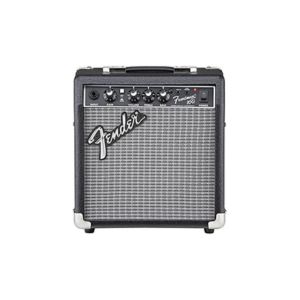
 (4.9 / 5)
(4.9 / 5)
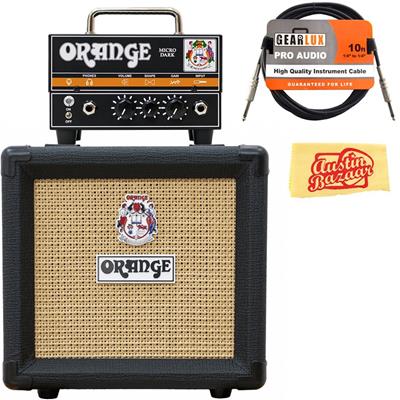
 (4.8 / 5)
(4.8 / 5)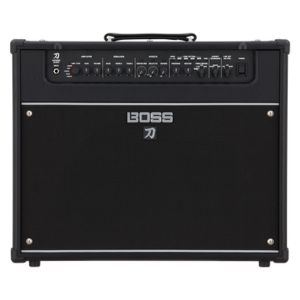


 (4.7 / 5)
(4.7 / 5)



